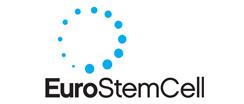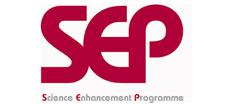Stem Cells
Students need to be able to describe the function of stem cells and discuss potential benefits and risks associated with the use of stem cells in medicine. Often students display confusion about the difference between stem cells and cloning. It is important for them to appreciate that stem cells are undifferentiated cells that researchers hope can be programmed to produce any kind of cell in the body, whilst cloning is the production of genetically identical organisms.
In explaining about stem cells it is important that students can discuss these in relation to embryonic and adult animals and also meristems in plants; often students only demonstrate knowledge about stem cells in relation to embryos, with many displaying no knowledge of the term meristem and/or not understanding that stem cells are also present in adult animals, so it's important to provide students with examples of using stem cells from both adult animals and embryos. Students could compile a table of the similarities and differences in the use of stem cells from both adult animals and embryos, alternatively they could be asked to produce a poster or leaflet for their local hospital that explain how stem cells are used.
Whilst this list provides a source of information and ideas for experimental work, it is important to note that recommendations can date very quickly. Do NOT follow suggestions which conflict with current advice from CLEAPSS, SSERC or recent safety guides. eLibrary users are responsible for ensuring that any activity, including practical work, which they carry out is consistent with current regulations related to Health and Safety and that they carry an appropriate risk assessment. Further information is provided in our Health and Safety guidance.
- ALL
- Teacher guidance
- Presentation
- Article
- Group work
- External link
Teacher guidance
All About Stem Cells
These activities introduce students to the science of stem cells and explore four basic themes in stem cell biology:
1. What is a stem cell? – what STEM cells can do; types of stem cell
2. Where do embryonic stem cells come from? – the blastocyst; cell culture; IVF
3. Why bother with stem cells? – applications now and in the future
4. Making stem cells – induced pluripotent stem cells (iPS cells)
It is suggested that students work in groups to produce a presentation on one of these areas using a set of cards as stimulus material. The activity can be differentiated with the addition of the worksheets and poster templates which can be used to scaffold the presentations
Presentation
Introducing Stem Cells *suitable for home teaching*
This resource includes a presentation and extensive activities (for either KS3 or KS4 students). You'll want to review both the presentation and activities and decide which slides and which activities would be most suitable for your students, and the activities will need to be separated and fitted into lesson plans. There is a worksheet activity related to a newspaper article, two puzzle type activities and a longer discussion activity on ethical issues surrounding stem cell research.
Article
What Are Stem Cells? *suitable for home teaching*
This Catalyst article explains the use of stem cells to treat medical problems, and outlines new possibilities for the use of adult stem cells in treatment. Students could be given this article as pre-reading for a lesson and be prepared to give a two minute summary of a particular aspect of the article such as use of stem cells to treat heart damage in patients who have had a heart attack or the possible drawback of the use of embryonic stem cells.
For further ideas on how to make effective use of Catalyst articles see: Using Catalyst Magazine: Scientists and How They Work
Group work
Hope Beyond Hype
This comic book provides an interesting and alternative approach to teaching the topic of stem cells. Whilst it may be not be feasible to print a copy of the comic book for every student (it is 16 pages long), it may be possible to print copies for students to work in groups of 4, or the resource could be used in class on a whiteboard. The idea behind the comic book approach is that such stories allow students to engage with scientific concepts and processes in a different, and enjoyable, way. By nature, they are visually appealing and involve elements of story-telling - allowing the student to get involved in the story and the science, compelling them to keep reading.
Having read through the comic book the resource then suggests various ways in which students could further develop their understanding through the creation of their own comic strip. Students could for example be asked to create a comic strip on "how stem cells can be used" The resource also includes a card game, which is based on people within the comic book.
Debate kit - stem cells
This resource provides a detailed lesson plan and background teacher notes to run a debate that considers the ethical issues that stem cell treatment raises. The debate is structured through role play of eight different fictional characters, for which debate cards are provided. The overarching question for the debate is: Should the UK government fund embryonic stem cell research.
The use of this debate as a teaching strategy provides an opportunity for students to explore the different sides of the issues relating to stem cells and compare others' points of view, as well as considering social, ethical, political and factual issues in an integrated way.
External link
Article on Cloning
This is a detailed article which examines how cloning works and possible uses of cloning technology. The website does contain a number of possible distracting advertisements, so it may be best to cut and paste the text into a word document which students could then be asked to read through for homework. They could then be tasked with preparing a short summary (or table) which lists the differences between cloning and stem cell technology.




